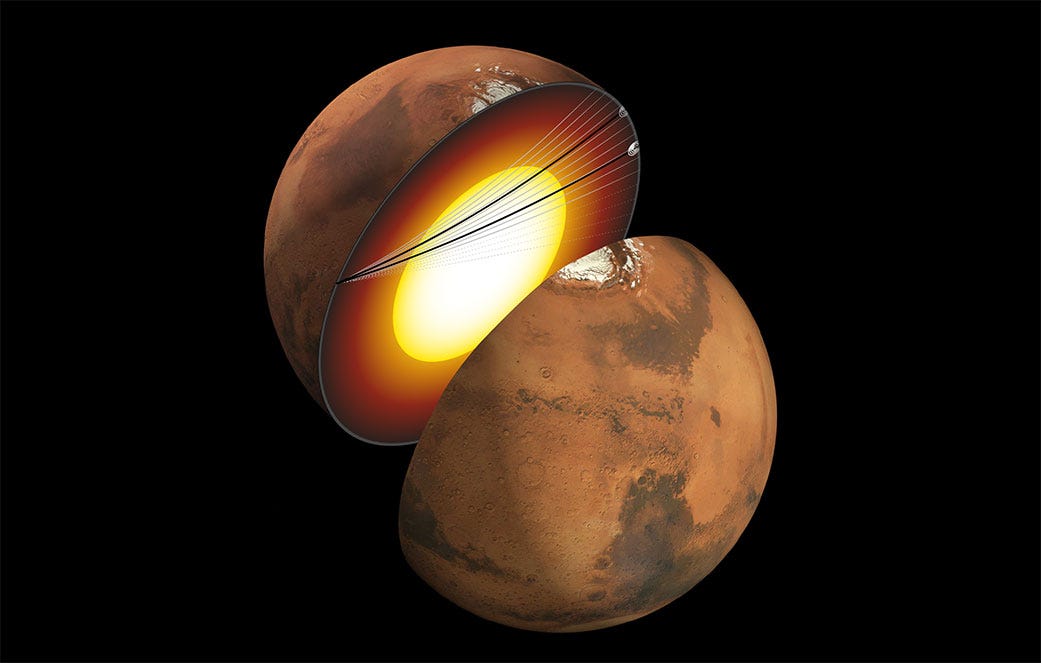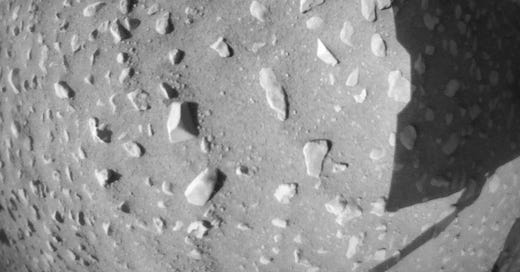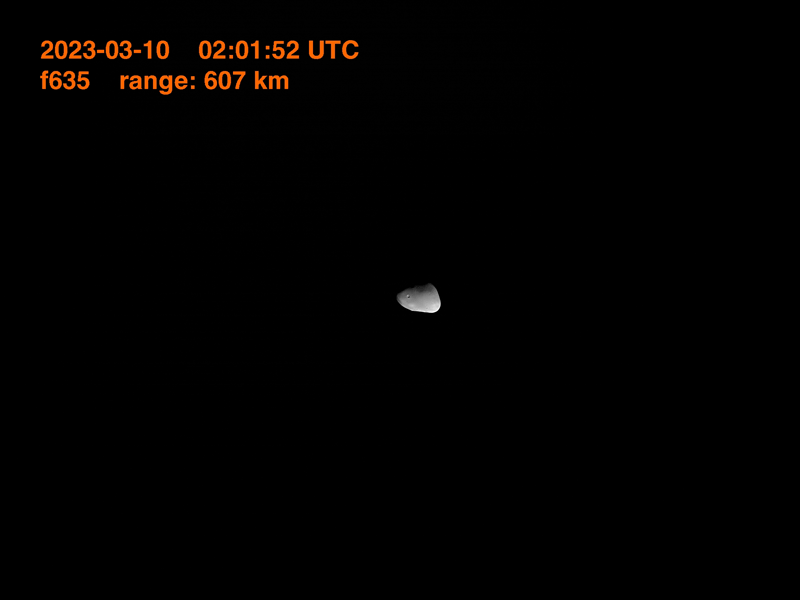Issue24: New findings about Mars' interior, mystery of CO isotope, first clearest look at Deimos, and much more
Hello Mars enthusiasts, Martian Sunday completes two years! Thank you for your support and time! I request you to keep reading this newsletter & always stay curious for our next Mother Planet!
Missions
Curiosity received a major software upgrade: Since 2016, the rover team has been working on this new software which contains total 180 improvements! The major changes are reduced wear and tear of wheels and reduced time for image processing so it can do more science. Jonathan Denison of JPL, Curiosity’s engineering operations team chief says,
“This won’t let Curiosity drive as quickly as Perseverance, but instead of stopping for a full minute after a drive segment, we’re stopping for just a moment or two.”
Mars helicopter completes 50+ flights! : NASA's Ingenuity helicopter has completed 51 flights on the red planet, flying across the rough and hazardous terrain! The copter has fully repositioned itself and is now ready to explore “Fall River Pass” region of Jezero Crater.

JAXA signed MoU with NASA: Being part of MMX mission, NASA is going to provide Mars-moon Exploration with GAmma rays and NEutrons (MEGANE) spectroscopy instrument, a pneumatic sampler, tracking support through its Deep Space Network, and observation support during the sample recovery.

Second review of the MSR program has begun: An independent review board will finalize the cost & timelines within the guidelines & a final report will be prepared by late August.
Research & observations
A new look at Mars' liquid iron core: On August 25, 2021 and September 18, 2021, InSight lander detected two farside quakes (originated from the planet's opposite side) in the shadow-zone where quakes refract away from the lander. These findings suggest that the Mars' liquid iron core is smaller and denser than previously thought & a fifth of it is composed of sulfur, oxygen, carbon, and hydrogen.

The mystery of heavy CO isotopes: A new study suggests that the abundance of CO2 having heavy Carbon-13 is relatively higher than CO2 having light Carbon-12. But in case of Carbon monoxide, its vice versa, strange! Because 12CO2 molecules are more efficiently destroyed by sunlight than 13CO2, leading a depletion of 13C in CO over several billion years.
The isotopes of Carbon help us estimate amount of CO2 in the past and the Trace Gas Orbiter suggest that less CO2 has escaped the planet than previously thought and therefore we've to rethink about the composition of early Martian atmosphere!
Also, measurements from Curiosity rover reveal the depletion of 13C in the surface organic materials & we don't know whether organic materials are produced by biological process or not!
Manish Patel, lead of the OU ExoMars research group, says,
“The fact that both atmospheric CO and surface organics share this 13C-depleted isotopic signature that Juan (lead author) has measured may indicate these organics are more likely to be non-biological in origin.”
Imagery
Hope Orbiter's high and elongated orbit allows it to take up-close images of Martian moon, Deimos and the observations suggest that the moon is made up of the same material as Mars & hence moon probably isn't a captured body!
Recommendation
Listen to the podcast “How to do Extra-vehicular activities on Mars?” by wemartians.com to know how astronauts will do experiments, field geology, daily activities, marswalks, etc… on the red planet!
Take a look at this global map of Mars made by using MRO's data, CTX mosaic which provides a broader view of terrain!




